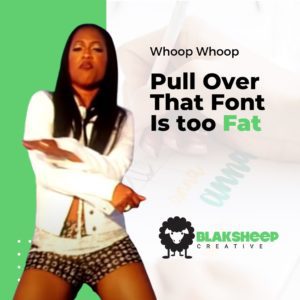When you admire the letters on your screen, street signs, or car dashboard, have you ever pondered their origin? Each font you encounter, whether bold and attention-grabbing or subtle and elegant, has been meticulously crafted by a skilled designer. However, for many independent font creators, penetrating this market can feel like an insurmountable challenge, thanks to the behemoth that reigns supreme in the industry: Monotype.
Cindy Thomason’s Struggle
Cindy Thomason’s journey serves as a poignant testament to the challenges faced by font designers trying to make their mark. Her font creation, Grandhappy, gained recognition when Warner Bros. adopted it for The Great Gatsby adaptation. However, the payout for this dream opportunity left much to be desired – a mere $12. It’s a stark reminder that even with exceptional talent, navigating the font industry’s landscape can be daunting.

Alternate letters designed by Thomason for her Grandhappy font (Cindy Thomason)
The Crowded Space of Independent Font Creators
The font world is a realm filled with talented artists, but it’s also a fiercely competitive and crowded space. Today, there are approximately 4,500 independent artists selling their fonts on platforms like MyFonts, and the competition shows no signs of abating. According to a blog post, there are over 200,000 fonts in existence globally. While this number reflects the total number of fonts, it doesn’t necessarily equate to the number of font designers.
This intense competition becomes even more challenging as Monotype, with its seemingly monopolistic presence, continues to expand its reach.
In the ever-evolving world of graphic design, understanding the nuances of fonts is just one piece of the puzzle. To enhance your knowledge further, check out our comprehensive guide on Graphic Design Essentials for Digital Marketers. This resource will equip you with essential skills to elevate your digital marketing efforts.
Monotype’s Historical Dominance
Monotype’s roots can be traced back to Johannes Gutenberg’s revolutionary printing press in 1440. Over the centuries, it has steadily acquired some of the world’s most beloved fonts and marketplaces, solidifying its dominance in the industry. This historical legacy, however, comes with its share of controversies.

Monotype’s Controversial Control
Monotype’s aggressive acquisitions and firm grip on font licensing have given rise to concerns about a lack of healthy competition within the industry. This monopolistic posture has raised questions about whether it is stifling the growth and creativity of font designers who dare to venture outside its sphere of influence.
Competitors and the Independent Designer’s Dilemma
In today’s font landscape, Monotype’s primary competitors include Adobe Fonts and Google Fonts, but thousands of independent designers are continually trying to promote their typefaces. However, many of these designers find themselves tethered to Monotype’s platforms. For instance, MyFonts, with its 4,500 foundries and over 250,000 typefaces, has become a go-to marketplace. But the price of fame is steep; Monotype claims a hefty 50% commission on every sale, leaving designers with limited alternatives.
Success Stories Within the Monotype Ecosystem
Despite the challenges posed by Monotype’s dominance, some designers have managed to find success within this framework. Sam Parrett, the creator of La Luxes, an aesthetically pleasing font that has made waves in the design community, earns around $7,000 per month after accounting for Monotype’s fees.
The Future: Subscription Models and AI
As the font industry evolves, Monotype is gearing up to introduce a subscription model on MyFonts. While this model may offer designers a more predictable income stream, concerns linger about Monotype’s ownership of popular fonts and the potential for it to reap disproportionate benefits from such a model. Additionally, the rise of artificial intelligence in font creation presents both challenges and opportunities. While some may worry about the future, many believe that the artistry and craftsmanship of font design will always hold a unique and irreplaceable place in our visual world.
Curious how artificial intelligence is reshaping more than just design? Read our article on how ChatGPT is changing the SEO game for small businesses and see how AI can give your brand a competitive edge online.

A green sign featuring Monotype’s old stock ticker symbol at its offices in Woburn, Massachusetts. (Getty Images/Boston Globe).
As we navigate the changing landscape of font design and its intersection with technology, don’t miss out on the broader digital marketing trends. Discover how artificial intelligence is revolutionizing the industry in our latest post on Harnessing the Power of Artificial Intelligence in Digital Marketing in 2023.
Shaping the Visual Language of Our World
In this ever-changing landscape, font designers, whether independent or partnered with Monotype, continue to play a pivotal role in shaping the visual language that surrounds us. The fonts we encounter daily convey not only words but also emotions, styles, and personalities. It’s worth pondering: What’s your favorite font, and have you ever considered the dedicated individuals behind these intricate designs? Feel free to share your thoughts on the font industry and its future!
















































